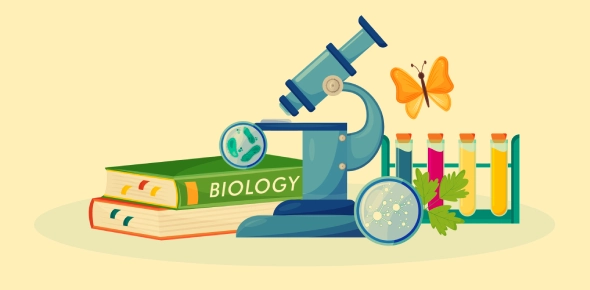The main source of energy for life on Earth is sunlight.
What does a double helix refer to?
Glucose is the most important sugar.
Enzymes are proteins.
What are lipids?
How do you denature a protein?
Is DNA double or single stranded?
Sucrose is know as table sugar.
What letters are short for Adenosine Triphosphate?
_____________ is used by spiders, insects, etc. to make their...
What compliments C?
What are carbohydrates?
Synthesis is building up
What compliments A?
The branch of chemistry that specializes in the study of carbon...
Cellulose is used for energy in humans.
A reaction in which two molecules are covalently bonded to each other...
How many amino acids are there?
How many different types of amino acids make up proteins?
What are the nitrogenous bases of DNA?
How many strands does DNA have?
What is the monomer of carbs?
What is the polymer of a carbohydrate?
Lipids are generally _______.
Name a quality of saturated fats
What are the monomers for each group?
What is a monomer?
Carbon skeletons may vary in
Enzymes slow down chemical reactions.
One DNA strand is complementary to the other, choose the correct ones...
Can cellulose be used for energy in humans?
What is a polymer?
Name a quality of unsaturated fats
What are the polymers for each group?
Every protein (polypeptide) has a free ________________ on one end and...
CHO stands for carbohydrates.
______________ compounds are compounds that contain carbon.
The organic phosphate, _______, has three phosphates present.
What does antiparallel refer to?
Carbohydrates are composed of:
Organisms are made up of chemicals that are based mostly on the...
The seven chemical groups are _____________ and they __________...
The molecule of DNA consists of two strands coiled together to form a...
How do you get from a monomer to a polymer?
The simplest form of a carbohydrate is __________________.
Each enzyme catalyses only one type of reaction.
What is chitin used for?
Polymers are disassembled by _______________.
Sucrose is the most common _______________.
What does glucose+fructose give you?
Enzymes are monomers.
What is a dehydration/condensation reaction?
What are the functions of each group?
The repeating units of smaller molecules are called...
How do you get from a polymer to a monomer?
_________________ differ in the covalent arrangements of their atoms.
The key to carbon's versatility is due to its electron...
What is hydrolysis?
What is the name of the process that joins monomers together to make...
What are the 3 monosaccharides?
What is cellulose used for?
Glycerol has only ____ carbons.(how many)
What does it mean to denature a protein?
____________________ have the same covalent partnerships, but differ...
What is starch?
___________________ is a structural polysaccharide.
A ______________ is a long molecule consisting of many similar or...
What holds 2 monosaccharides together?
_____________ are compounds that have the same number of atoms of the...
Enzymes......
Hydrocarbon is hydrophillic
Is hydrocarbon soluble in water?
What are the three kinds of isomers?
A polypeptide is the same as a protein.
Critically important large molecules of all living things fall into 7...
Hydrocarbon bonds are nonpolar
A_______ is a polymer constructed from a set of just 20 kinds of...
The carbon skeleton is up to 14 carbons long.
Give an example of a nucleic acid.
What elements are in each group?
What are the 3 structures of a nucleotide?(multiple answers)
In hydrolysis, __________________ , and in this process water is...
Which functional group helps stabilize protein structures by forming...
A_______ is a polymer constructed from a set of just 20 kinds of...
__________________________ are chemical groups that participate in...
There are three huge molecules called macromolecules:
Match the following
___________________ are organic molecules that consist of only C and H...
Chitin is......(check all that apply)
The four main macromolecules are ___________, _____________,...
Cellulose is....(check all that apply)

















